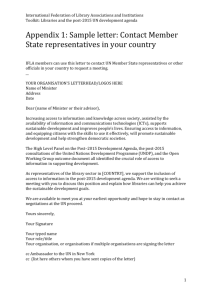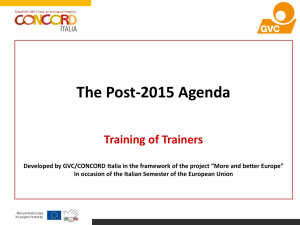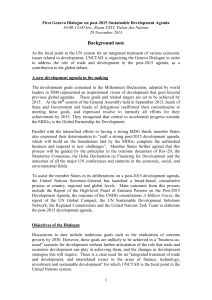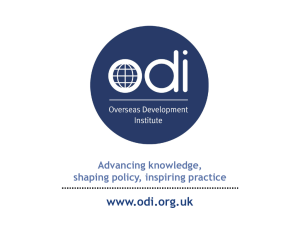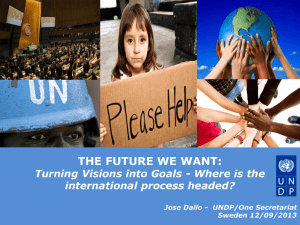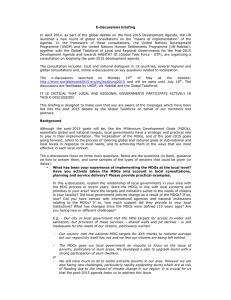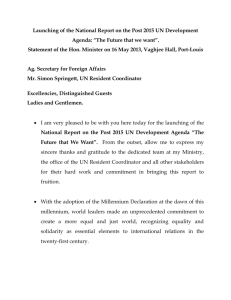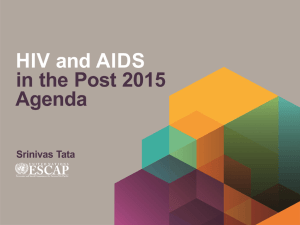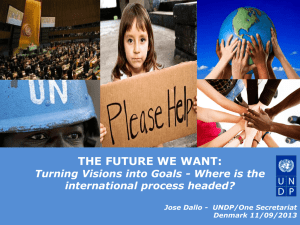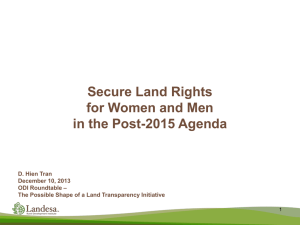Post-2015 International Development Framework
advertisement
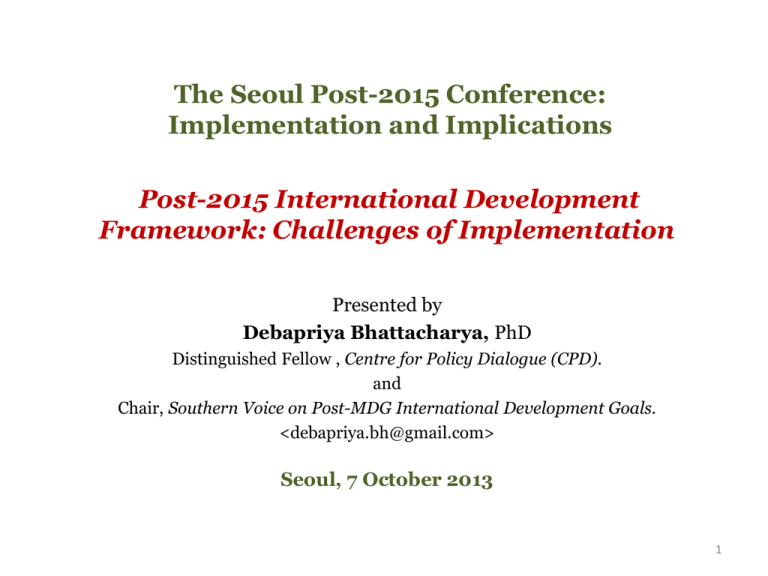
The Seoul Post-2015 Conference: Implementation and Implications Post-2015 International Development Framework: Challenges of Implementation Presented by Debapriya Bhattacharya, PhD Distinguished Fellow , Centre for Policy Dialogue (CPD). and Chair, Southern Voice on Post-MDG International Development Goals. <debapriya.bh@gmail.com> Seoul, 7 October 2013 1 1. Defining of Post-2015 Implementation Phase • The phase of execution of the post-2015 design through various plans, methods and practice of a plan. As such, implementation is the set of action that must follow adoption of the post-MDGs international development framework. • Thus, the implementation phase of post-2015 would entail transforming a concept into practice. It would include: Engineering necessary institutional structure for realizing the conceptual design. Putting in operation the stream of activities and inputs envisaged in the design. Management of the delivery of the inputs for realizing the project intentions. Measuring the intended outputs and outcomes. Operationalising the feedback loops of transparency and accountability mechanism for mid-course correction. • Implementation- one of the ‘‘fault lines” of MDGs(2000) design. 2. Lessons from Implementation of the MDGs (2000) • Shortfalls in Accountability Mechanism: Little attention to accountability from global to local and national level in their delivery and weak sense of popular ownership and mobilization in support of their achievement. • Limits of Market-Determined Process: Market-determined processes were insufficient to deliver in themselves the MDG results, and often operated in the opposite direction. For example, economic growth did not lead to full and productive employment and decent work. • Public Expenditure & Fiscal Space: In many countries, there has been no policy coherence and a lack of prioritization to public expenditure and fiscal policies required to meet the MDGs. • Inadequate Resource Flow: The MDG Gap Taskforce Reports identified significant gap towards the target of ODA flow. Fall in ODA flow in 2011 in real terms. 3 2. Lessons from Implementation of the MDGs (2000) (Contd.) • Security Agenda: Emergence of the security agenda after September 2001 created pressure on the agenda, including efforts aimed at financing its implementation. • Global Financial Crisis: The global financial and economic crisis resulted in setbacks for realizing the MDGs. • Reform of Global Rules: Stalled Doha Round talks, developed countries inadequacies in global architecture stalemate in climate negotiations. • Climate Issues: Rapid economic growth associated with environmental exploitation and related problems of pollution, degradation, depletion of natural resources, and climate change. • Lack of Necessary Data as Information: Although UN agencies are collaborating with partners to produce adequate and consistent estimates for all MDGs indicators, sufficient and reliable data for all of the indicators for all countries were not available. 4 4. Various Reports on Implementation Tools for Post-2015 Agenda Facts Distinct Aspects of Implementation Matters in Building Blocks of Post-2015 Agenda More Attention in raising stable, long-term finance for development by financial reform (HLP) Identification of innovative sources of additional financing for development, such as taxes on financial transactions and tax havens (Regional Perspectives of UN) Financing Issues Financing of development through ODA which should be reoriented towards a genuine bottom-up approach which is conducted in a transparent way (Regional Perspectives of UN) Means of Implementation beyond Finance Coordination & Information Issues Financing the sustainable development through public-private partnerships (PPP) (SDSN) Inclusion of South-South cooperation (UNGC) Incorporate of remittance as a mean of innovative finance (Regional Perspectives of UN) Utilization digital technology and map-based analytics to realize the broad sustainable development goals (UNGC) Focus on creating more equitable societies (Regional Perspectives of UN) Comprehensive and participatory debt audits for immediate cancellation and repudiation of debts illegitimately owed (HLP) Focus on the intra-national disparities in wealth and education (Regional Perspectives of UN) Enhanced coordination at the regional and sub-regional level (Regional Perspectives of UN) Robust trans-boundary management and coordination mechanisms by 2020 (SDSN) • Calls for a data revolution for sustainable development, with a new international initiative to improve the quality of statistics and information available to citizens (HLP). Source: Collated from HLP, UNGC, Regional Perspective of UN, SDSN. 5 5. Key Questions Regarding the Implementation of Post-2015 Agenda 1. Will the fault lines of MDG design be addressed in the post-2015 agenda? 2. Will there be adequate instruments/tools/resources to implement the multiple objectives of post-MDGs? 3. How to address concerns and interests of the countries with special needs within universal agenda? 4. How to integrate national priorities and objectives in a universal SD framework? 5. How to reflect intra-country exclusions and disparity in a global framework? 6. What would be the global coordination mechanism- political and executive- for overseeing the implementation of post-2015 framework? 7. What the role will be assigned to the non-state actors including the NGOs/CSOs/CBOs and business/industry in the post-2015 framework? 8. How to address the data need & catalyzing the data revolution? Thank You 7
